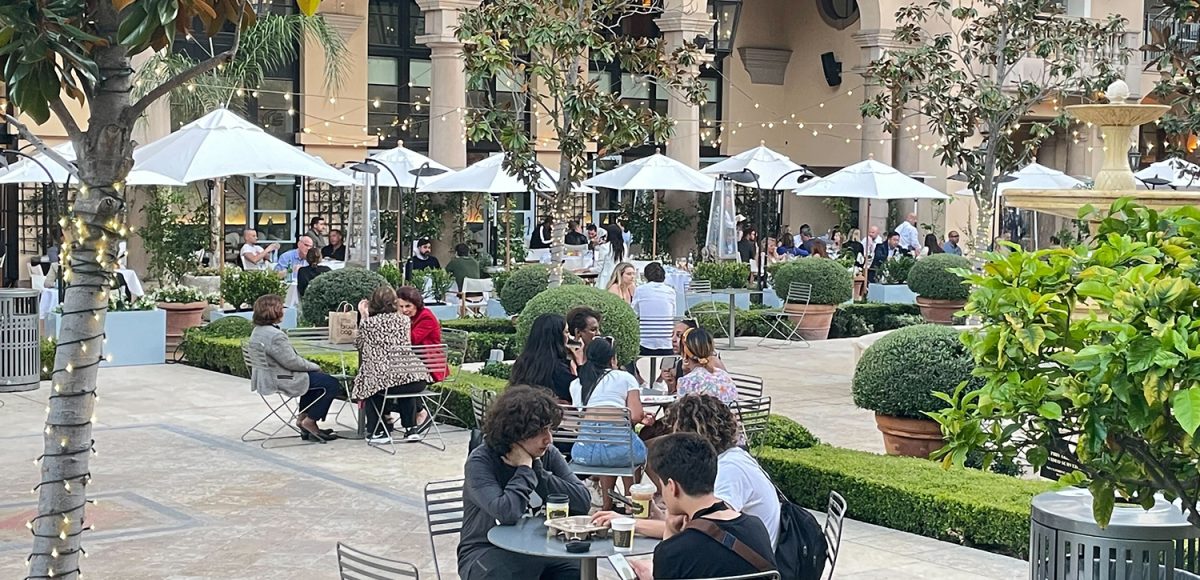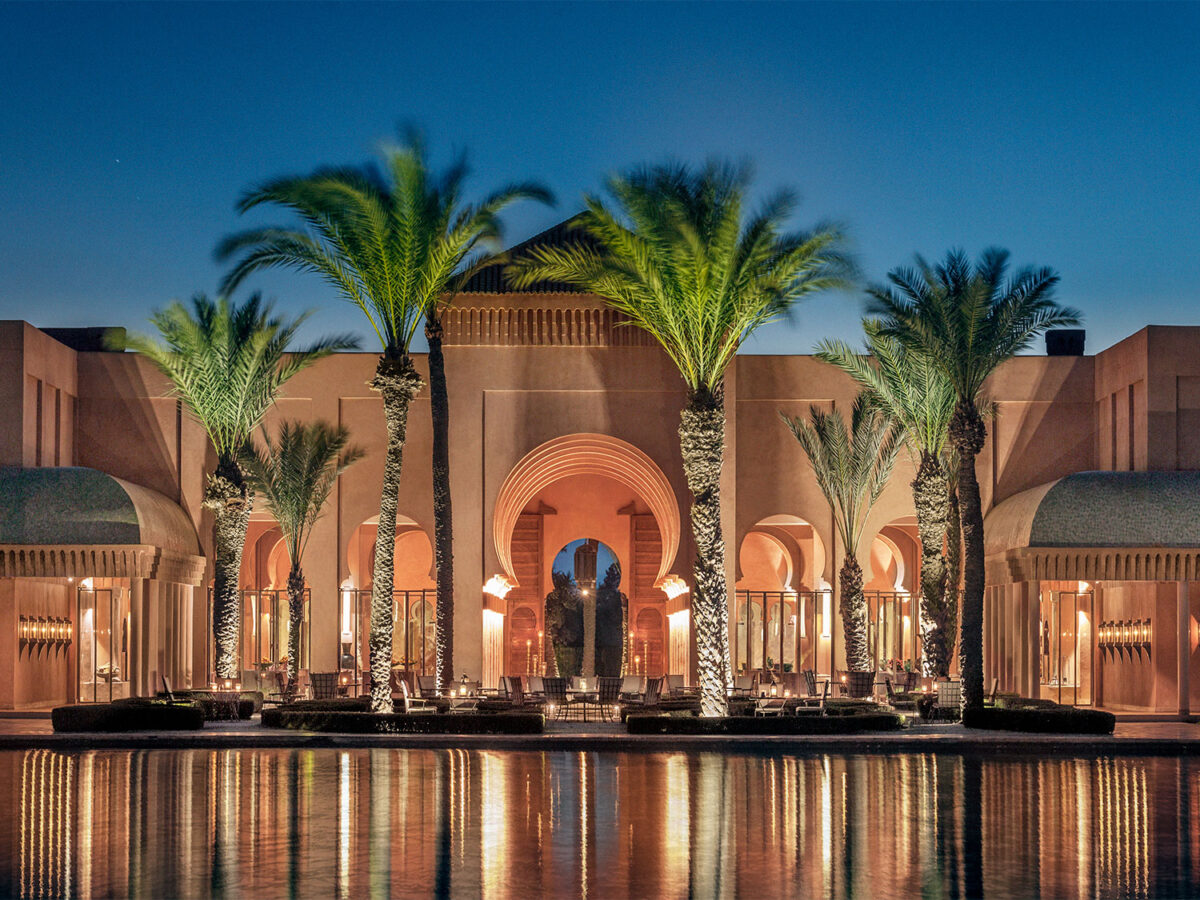The OpenBH Conversion Code and Fee Structure Subcommittee reviewed a preliminary draft of potential changes to permanent open-air dining code regulations at its April 6 meeting. Council liaisons Vice Mayor Julian Gold and Councilmember Lester Friedman supported code conversions regarding parking, maintaining a 6-foot path of travel sidewalk clearance, limiting umbrellas to a confined space or railing, speedier permit approvals and allowing restaurants with outdoor dining to extend beyond their fac?ade only if written permission is obtained from neighbors.
While the liaisons agreed with the draft tiered fee structure that takes into account the popularity of a location, they also directed to revise and lower the proposed pricing.
The fee scheme proposed is divided in three parts: tier one encompasses restaurants on Rodeo, Canon, and North Beverly Drives, in addition to Beverly Canon Gardens, with a monthly cost of $3 per square foot of open-air dining and $5 for parklet dining. Tier two includes restaurants in the Business Triangle and South Beverly Drive, with a monthly cost of $2.25 per square foot of open-air dining and $3.50 for parklet dining. Tier three includes Robertson, Olympic, La Cienega, Wilshire and South Santa Monica Boulevards, with a monthly cost of $1.50 per square foot of open-air dining and $2.50 for parklet dining.
While the Beverly Hills Chamber of Commerce expressed support for most of the proposals in the draft report, the fee structure as outlined drew criticism. Citing outdoor dining permit pricing in nearby cities like Pasadena, which charges between $2.75 to $13 per square foot per year, and Culver City, which charges $13 per square foot per year, the Chamber encouraged the city to make the fees more competitive. “As much as we want our outdoor dining, I think if these prices went in, I would venture to say we’d lose about 50 percent,” Todd Johnson, CEO of the Chamber, said.
Currently, all permits using the public right of way, regardless of location, must pay a rental fee of $1.55 or $1.07 per square foot per month, depending on whether the installation has a railing or barrier. The new fee structure was developed to reflect the cost of indoor dining. “I do agree that the parklets should be paid at a higher rate,” Gold said. “But do I think we should take another stab at trying to find a number that’s consistent with Beverly Hills but is more in line with what we see in other cities.” The liaisons supported the fee structure but advised staff to adjust the pricing. “I would say for open-air dining, we have to be at two bucks or less,” Gold added.
Location of Dining
Proposed code changes would allow restaurants to extend outdoor dining operations beyond their immediate fac?ade, with permission from neighboring tenants and property owners. The restaurant owner would be required to show proof of written permission from the adjacent stakeholders, and that permission may be revoked.
Parking
According to city staff, there is no need for additional parking for open-air dining on private property if it’s within the first 40 feet from the sidewalk. Currently, open-air dining on private property requires the provision of parking at the same rate as indoor dining space, but this change removes the potential barrier while encouraging outdoor dining toward the front of the building. The change is anticipated to simplify and speed up the permit approval process.
“We’re using the parking as an incentive to push the dining toward the front and activate the streetscape,” City Planner Timothea Tway said.
Path of Travel
To allow a wider path of travel on sidewalks, restaurants with outdoor dining will be required to keep a minimum of 6 feet on the sidewalk for pedestrians traffic, and use of the public right-of-way for dining in will be limited to 50% of the sidewalk width, at most. Current code regulations require a minimum 5-foot path of travel, with no limits on the maximum percentage of sidewalk width that may be occupied. Existing open-air dining installations that do not maintain a 6-foot-wide path of travel will be considered legally nonconforming and will be able to keep their currently approved configuration until the open-air dining permit is up for renewal. Afterwards, all outdoor dining installations must be redesigned accordingly.
Changes to Umbrella and Barrier Standards
Proposed changes to the code language related to umbrella and barrier standards require that umbrellas be integrated into railings and barriers when possible and does not allow for umbrella bases to be located outside the open-air dining area. To help delineate dining area on the sidewalk and prevent encroachment on paths of travel, barriers will also be required for installations with more than eight seats; right now, barriers are required for more than 12 seats.
Approval
To expedite the process, the draft proposes that outdoor dining permits be approved ministerially, without discretionary review, and can be approved at the public counter, without months of public noticing.
To be approved ministerially, the following outdoor dining criteria must be met: dining may not extend beyond the facade of the restaurant that it serves; the outdoor dining area must be smaller than 50% of the indoor square footage of the restaurant that it serves; if the location is outside the Business Triangle, it may not operate after 10 p.m. and before 7 a.m. on weekdays and 9 a.m. on weekends; if located on private property, it must be located farther than 100 feet from residentially zoned (excluding mixed use zone) properties; if located on public property, it must be in the Business Triangle or limited to South Beverly, Wilshire, Olympic, Robertson, San Vicente, South Santa Monica, and La Cienega Boulevards; and the open-air dining does not interfere with public infrastructure or utilities. Projects that do not meet these standards would require discretionary review but according to city staff, roughly 75% of the outdoor dining permit requests are in the Triangle.
In the draft proposal, open-air dining permits must be renewed every five years, without limiting the number of renewals so that holders do not have to reapply for the permit.
The OpenBH program will remain in place in its current form, without fees, through Dec. 31, 2022. The next OpenBH Conversion Code and Fee Structure Subcommittee meeting will be held in May.







